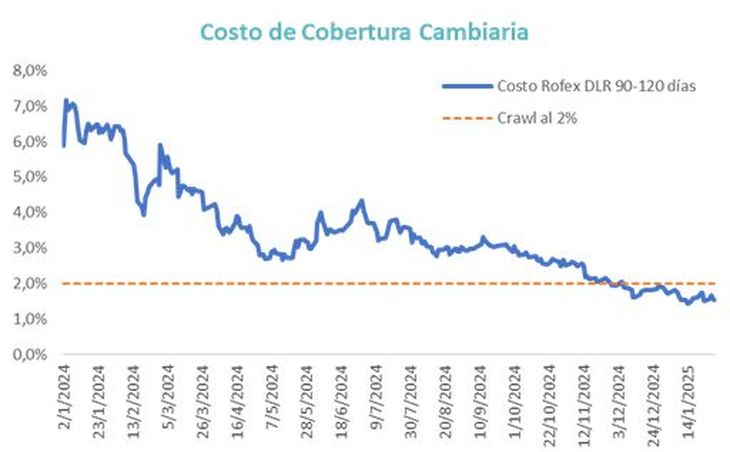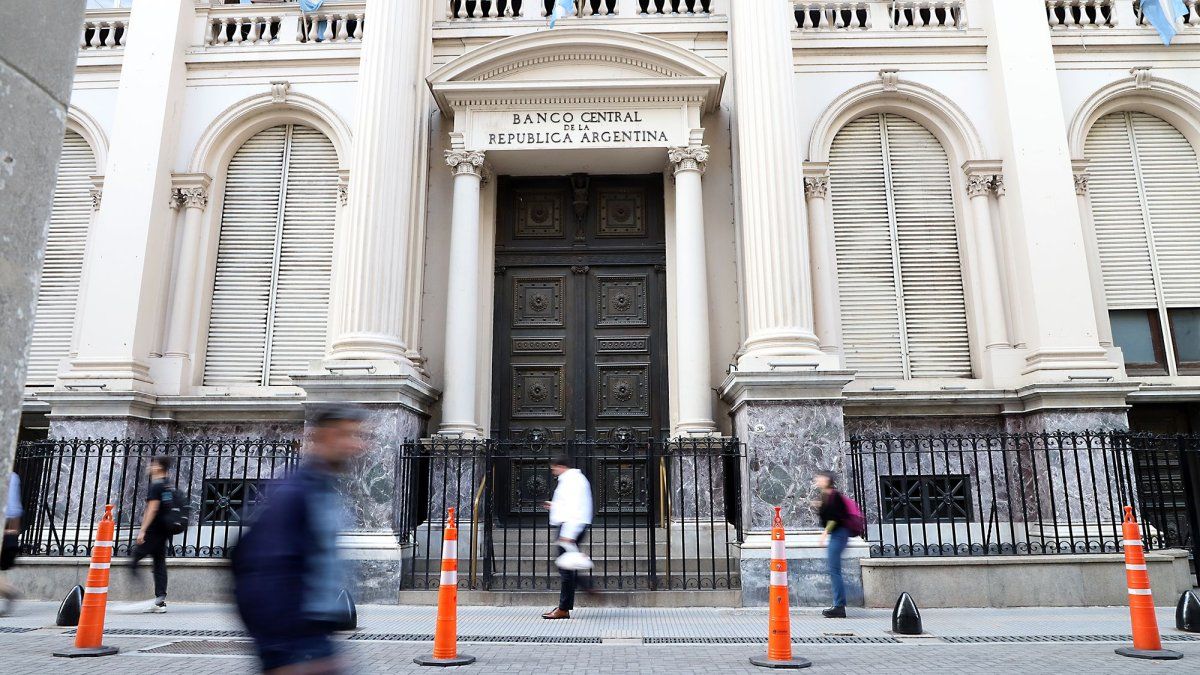ANDThe Central Bank (BCRA) announced an expected three points in the monetary policy rate. It was a decision that was pending and that was complemented with the decline of the “Crawling Peg” to 1%, which comes into force on Monday, February 3.
Probably in the coming weeks we continue to see different measures that aim to advance with the fine tuning of the economic program. Given the lowest nominality, The magnitude of the adjustments that can be given tends to be more limited. Likewise, we see how relevant understanding the balance between the interest rate and what happens in the exchange market, probably the strongest restriction when defining the interest rate.
In recent weeks the field was marked to advance in the reduction of the interest rate. The first step was to lower the rhythm of “Crawling Peg”, Today probably one of the factors that marks a floor to the monthly inflation rhythm.
In parallel, progress was made with a Transitory reduction of retentions to the agricultural sector, to encourage an acceleration in the liquidation process and consequent increase in currency offer. And also advanced in Clear the debt maturities of the National Treasury of the pre-electoral period.
In short, we worked on the factors of supply and demand for foreign exchange, in order to leave a broader margin to be able to lower the interest rate in pesos without affecting the liquidation of dollars or negatively impacting the level of exchange gap .
But when analyzing the applied casualties, it is clear that In the “Crawling Peg” the rate was lowered in half and in the monetary policy rate, the cut was just 10% of the pre-adjustment rate level. That is to say that we are facing Very different adjustment speeds.
This leads us to ask ourselves the reasons for that difference and what can involve forward.
The role of credit in dollars
Achieving a good fine tuning in interest rates is quite complex. This is because there are several objectives that must be given simultaneously and sometimes the interest rate necessary for each objective is very different.
The first objective of the BCRA is to ensure that The real demand for money and lower inflation is recovered. By logic that implies sustaining real interest levels as high as possible. But too high rates do not help recover the level of activity or lower the nominality in an economy that needs to cut and paranate inflationary inertia.
But probably The most important balance occurs in the exchange market. In recent months, there has been a strong credit growth in dollars, although that increase has been strongly linked to how the convenience of taking credit in foreign currency was adjusted.
As of January, a process of increasing credit in dollars began, but that rhythm was interrupted at the end of the second quarter when very fast progress was made in the interest rate cut in pesos.
Companies should be financed in dollars, when the rate paid in that currency plus coverage cost (Rofex 90 days as a reference) is cheaper than financing in pesos.
This relationship is presented in the following graph, where it can be seen that in June and July, post low that spred was negative, encouraging companies to cancel debt in dollars and finance in pesos.
megaqm graph 1.jpg
This balance does not depend only on the level of the rate in pesos, but also plays the cost of credits in dollars and especially the cost of exchange coverage. While the “crawl” remained at 2% monthly throughout 2024, in several months the cost of exchange coverage was well above that rhythm. This was due to the market expectation of an exchange unification that could include a exchange rate jump.
megaqm graph 2.jpg

In the previous graph, when the blue line is above the dotted line, The market assigns a greater probability of occurrence to a displacement with respect to the rhythm of “Crawling Peg” raised. When it is located below it is because it begins to join the lowering prices forward of the depreciation rhythm. The magnitude of that gap depends on the expectation of devaluation and indirectly on the level of the interest rate in pesos.
Therefore, The BCRA must be very attentive to that balance when defining the interest rate, Because hurrying in the decrease process may involve repeating the experience of June/July 2024, where credit was indirectly discouraged in dollars and the BCRA suffered it via negative flows in Mulc and increased the exchange gap.
Low of rates: What margin is forward?
The low rates applied by the BCRA was well below the reduction in the “Crawling Peg” rhythm. This decision is understood in the framework of the need to maintain the appeal to continue growing credit in dollars.
But also plays inflation and Need to maintain real rates that are not very negative in real terms.
That is why, when analyzing the applied decline, it is understood that this is the point where they believe that the balance between the multiplicity of objectives that the BCRA must analyze was achieved. This implies that There is a way to go forward, in which they must go Fulfilling goals that allow progress with the cuts of fees.
- ROFEX COVERAGE COST – DLR: The new rate (with the 3 cuts points) is compatible with current coverage cost levels will change (1.5% to 1.6% monthly) and tolerate up to 2% monthly cost ceilings. From there to above it implies a risk that the demand for credit in dollars be discouraged. This is the main reason why there was no progress with a greater cut, since it would have reached rates without margin to tolerate increases in the cost of coverage.
- Inflationary rhythm: An additional step is needed, not to generate negative real rates again. In February, the descending inertia of the inflationary rhythm and the decline of some taxes plays in favor, but it can negatively influence retentions, especially on food. Therefore, about 3 more months may be required so that the effect of the decrease of the 1% crawling peg is transferred to the inflationary rhythm.
- Gap level: These advances can be given whenever the exchange gap level is maintained. If the gap rises, the rate is needed as an incentive to sustain the demand for weights.
When analyzing all these variables, it is clear that The path that the BCRA can follow to advance in the trimming of interest rates needs to be cautious. Therefore, we do not rule out that only to the extent that the three points mentioned (coverage, inflation and gap) are achieved, The BCRA can advance with another partial cut. In summary, we are facing a low -step -stepped scheme, which will always be touring insurance.
Megaqm chief economist
Source: Ambito
David William is a talented author who has made a name for himself in the world of writing. He is a professional author who writes on a wide range of topics, from general interest to opinion news. David is currently working as a writer at 24 hours worlds where he brings his unique perspective and in-depth research to his articles, making them both informative and engaging.




